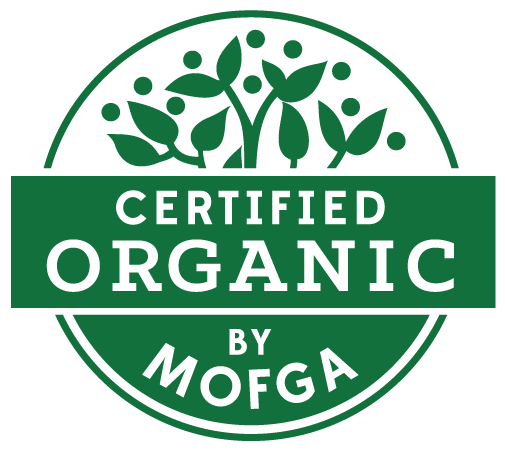By John Welton, Certification and Quality Specialist with MOFGA Certification Services

Second cup of coffee in hand? Check. Bagged lunch in my backpack? Check. Laptop and phone? Check and check. I have just over an hour to get to Mount Desert Island for a 9 a.m. inspection of a MOFGA-certified organic veggie farm and I can see my breath hitting the windshield on a colder-than-expected May morning. Turning the defrost on high while cracking a window does a quick fix on the fogginess before I get to the interstate, and soon I’m basking in the early spring sunshine with Bonnie Raitt belting it out in the cab.
Approaching the coast en route to the farm, my mind slips into the attention-to-detail mode that I’ve learned serves me best as an organic inspector for MOFGA. The process really began earlier in the day, poring over the farm’s files as I ate oatmeal, making mental checklists of the farm fields, greenhouses, storage areas, and how they use these spaces. Every farm is different, but I’ve worked on and been on enough farms to understand how an inspection will play out before I get there and have also come to understand that paying close attention and being present is far more important than memorizing details from their organic certification paperwork. So I use the drive to instead hone my observational skills for the day ahead, noticing, for example, the maples in full leaf and the vultures lofting on thermals over the Dedham cliffs. And besides, these signs of spring help my mind to relax, taking it off the details that will fill it during the inspections — how many row feet of carrots were planted before Mother’s Day; the greenhouse built earlier than the farm had thought and already full of tomato seedlings; the pullets bought for the kids but whose eggs will certainly be sold as organic because of how expensive the grain is … the lists go endlessly on.
The spontaneous creativity of farm life, the source of so much joy and daydreaming for farmers, proves difficult for any inspector to capture in an annual report, which is part of the requirements for the farm to use the organic label. It doesn’t help that the report form itself is spare, a series of boxes to check and others to fill with commentary, and the expectation for “objectivity” in the comment boxes is a constraint on even the driest of writers. How does one “objectively” report on the raw emotional experience of a farmer losing their fall crop of potatoes in the latest unprecedented, historic deluge without also losing something of the essence of the farm’s season and the farmer’s reason for buying in potatoes to resell at a loss?
Such experiences drive home the fact that organic inspectors exist in a liminal space between the abundant imagination of farming and the scarcity of creativity in regulatory reporting. Far from being an indictment of organic certification and the inspection process, working in such a space requires the hard skills of knowing what is and is not allowed for organic certification as much as the soft skills of listening to farmers and understanding how the stories of their lives fit with and struggle against the story of organic.
My truck’s cab, then, becomes its own transitional space, one into which I can empty these tensions of inspecting while holding onto and turning the attention to detail that inspection work requires into a craft of its own. Making observations of all the changes in the world around me is like a practice of remembering what has gone and anticipating what is to come. If I can appreciate the dappled shade under Norway maples along route 1A at 45 miles per hour then surely I can appreciate why a farmer might buy fertilizer at the last minute to feed the extra quarter acre of sweet corn they planted, and that’s why the bags of pelleted manure look hastily piled high in the corner of the barn. A few follow-up questions to clarify parts of the sweet corn planting story will also clarify that, in fact, their actions comply with organic certification standards. Check. Add the fertilizer to their materials list. Check. Make a note in the report narrative about the change in plans, and continue the farm tour. Check and check.
An hour later, in the farmhouse kitchen where midday sun streams through the windows, the details of paperwork now take center stage: the harvest records and inventory accounting, the sales records for retail at the farmers’ market and wholesale to the local grocer. I move as quickly as I can through reconciling these records and tracing the organic product from seed to sale so I can fit a hike in Acadia before another inspection on the mainland later in the afternoon. The azaleas should be in full bloom near the summits of every mountain in the park, and I can’t imagine a better lunch break than on an overlook of Somes Sound to clear my head before filling it again with the minutiae of farm life.
On the drive home at the end of the day, back in my truck’s cab, I empty myself of the details from the two inspections. Yet, having paid so much attention throughout the day, I’m surprised that I can still notice more, taking in the world and finding a place for the finest nuance. Through the windshield, it’s the shadows lengthening across the roads. Or the evening sun on faces in the opposite lane: some laughing, some singing, others looking grim in the traffic. All of their lives are as complex as the farms I just visited, and I laugh to think that organic inspecting, for all its attention to detail, is really a collector’s dream of the stories that surround us.
I know that I’m limited in how I can tell these stories when writing reports but gathering them forms the basis of our organic certification work in Maine. Getting to see firsthand and learn about the lives of organic farmers in the state gives us a better understanding of how to apply the U.S. Department of Agriculture (USDA) standards to any given situation. How we apply the rules requires an interpretation of the rules in the context of what is happening on the ground, and what is happening on the ground at farms is often fast-paced and complicated in both technical expertise and emotional experience.
This article was originally published in the summer 2024 issue of The Maine Organic Farmer & Gardener. Browse the archives for free content on organic agriculture and sustainable living practices. Subscribe to the publication by becoming a member!
